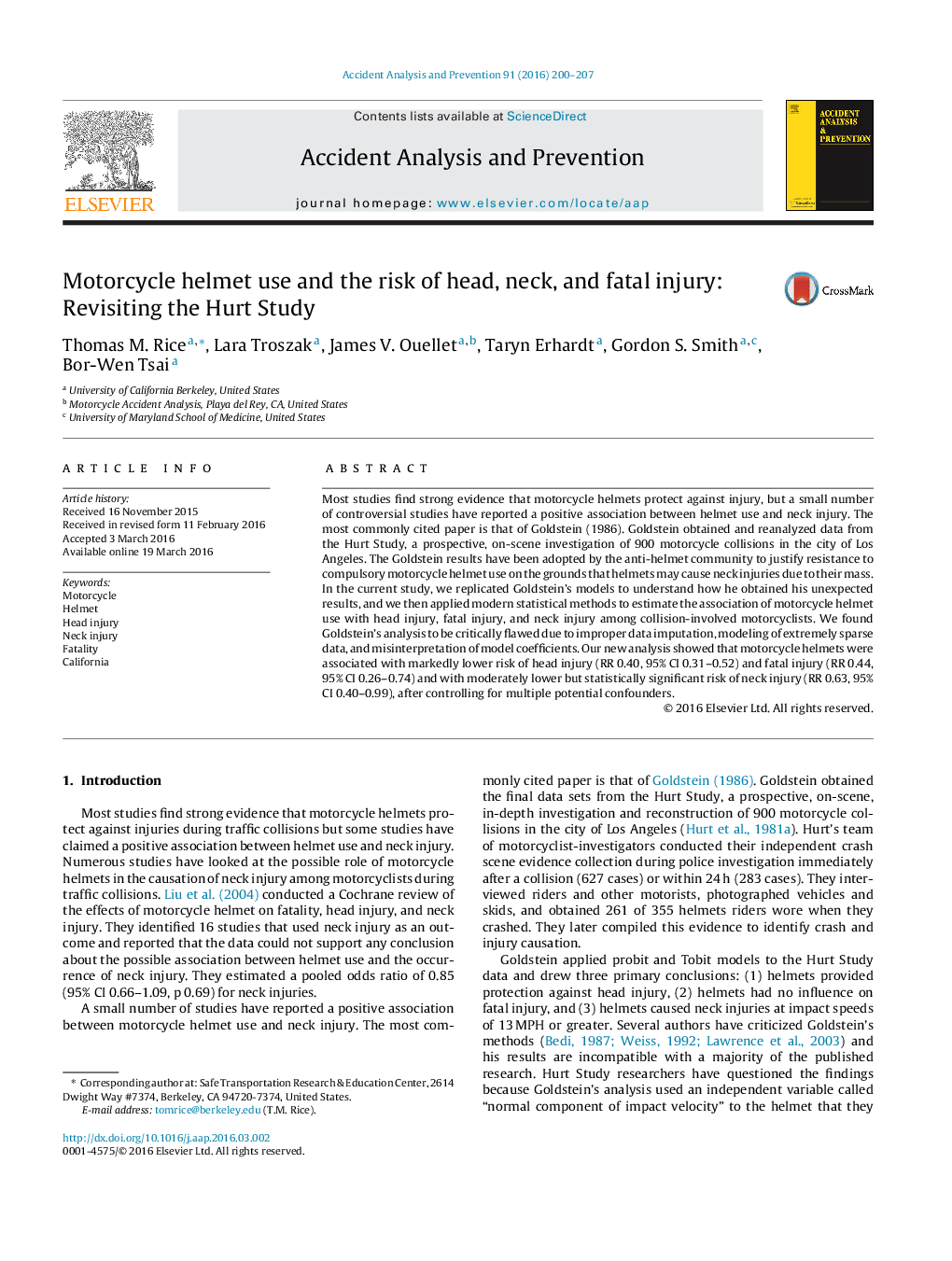| Article ID | Journal | Published Year | Pages | File Type |
|---|---|---|---|---|
| 571995 | Accident Analysis & Prevention | 2016 | 8 Pages |
•Goldstein analyzed data from the Hurt Study and reported that motorcycle helmets increased neck injury severity.•We replicated the Goldstein analysis and found it to be critically flawed.•Helmets were strongly predictive against head injury and of fatal injury.•Helmets were moderately protective against neck injury.
Most studies find strong evidence that motorcycle helmets protect against injury, but a small number of controversial studies have reported a positive association between helmet use and neck injury. The most commonly cited paper is that of Goldstein (1986). Goldstein obtained and reanalyzed data from the Hurt Study, a prospective, on-scene investigation of 900 motorcycle collisions in the city of Los Angeles. The Goldstein results have been adopted by the anti-helmet community to justify resistance to compulsory motorcycle helmet use on the grounds that helmets may cause neck injuries due to their mass. In the current study, we replicated Goldstein’s models to understand how he obtained his unexpected results, and we then applied modern statistical methods to estimate the association of motorcycle helmet use with head injury, fatal injury, and neck injury among collision-involved motorcyclists. We found Goldstein’s analysis to be critically flawed due to improper data imputation, modeling of extremely sparse data, and misinterpretation of model coefficients. Our new analysis showed that motorcycle helmets were associated with markedly lower risk of head injury (RR 0.40, 95% CI 0.31–0.52) and fatal injury (RR 0.44, 95% CI 0.26–0.74) and with moderately lower but statistically significant risk of neck injury (RR 0.63, 95% CI 0.40–0.99), after controlling for multiple potential confounders.
